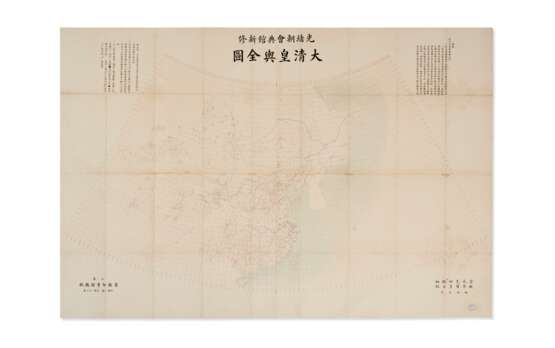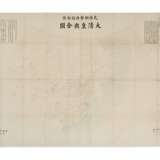ID 627612
Lot 123 | Imperial Atlas of the Great Qing
Estimate value
$ 1 000 – 1 500
The first complete map of China in the mathematical cartographic tradition made without foreign assistance. In 1889, with the accession of the Guangxu Emperor (1871-1908) to power after the regency of the Empress Dowager Cixi, the Emperor ordered that the entire country be re-surveyed so as to clarify land and taxation. The Emperor’s reforming instincts intensified after China’s defeat in the First Sino-Japanese War (1864-1895), when he decided to enact a series of reforms that he believed would better enable China to become more politically and economically powerful. In this he was not successful – his Hundred Days' Reform, that occurred from 11 June to 22 September 1898, was suppressed in a coup d’etat by the Empress Dowager Cixi, and the Emperor was placed under house in the Summer Palace, and eventually poisoned to death.
The Qing Bureau of Surveying was responsible for the work, and was allied to the Chinese Army Staff Headquarters. They completed the survey in 1899, a decade after it was started. Using Beijing as a prime meridian, the whole country was mapped using latitude and longitude, with the resulting map based on a conic projection. One of the effects of the survey taking 10 years, and being published in a post-coup political environment, is that map shows the degradation of Chinese national territory in the late-Qing dynasty, revealing both the domestic and foreign problems China faced at that time e.g. China’s ceding of Liaodong Peninsula, Taiwan and Penghu, and many other concessions under the terms of the Treaty of Shimonoseki, 17 April 1895, signed after the First Sino-Japanese War.
Large printed map of China, ink and color on paper, with wide yellow silk borders, texts in Chinese, approximately 1240 x 1835 mm; and 1520 x 2504 mm with borders. Title to the top in the middle, inscriptions on four corners; an accurate Chinese map on a section of sphere surface, defined by circular parallel lines from latitude 18 degrees north to 61 degrees north and straight meridian lines from 47 degrees east to 47 degrees west. Seas, lakes and major rivers printed in pale blue, symbols of administrative divisions outlined in red. (Some light stains around the folds of the map and on the silk borders, especially the lower right section, an approx. 60 x 120 mm surface abrasion on the left edge along the middle fold, some cracks along the folds expertly repaired).
Please note that this lot is subject to an import tariff. If the buyer instructs Christie’s to arrange shipping of the lot to a foreign address, the buyer will not be required to pay the import tariff. If the buyer instructs Christie’s to arrange shipping of the lot to a domestic address, if the buyer collects the property in person, or if the buyer arranges their own shipping (whether domestically or internationally), the buyer will be required to pay the import tariff. Please contact Post Sale Services on +1 212 636 2650 prior to bidding for more information.
| Artist: | William Shakespeare (1564 - 1616) |
|---|---|
| Applied technique: | Pencil |
| Artist: | William Shakespeare (1564 - 1616) |
|---|---|
| Applied technique: | Pencil |
| Address of auction |
CHRISTIE'S 8 King Street, St. James's SW1Y 6QT London United Kingdom | |
|---|---|---|
| Preview |
| |
| Phone | +44 (0)20 7839 9060 | |
| Buyer Premium | see on Website | |
| Conditions of purchase | Conditions of purchase |












